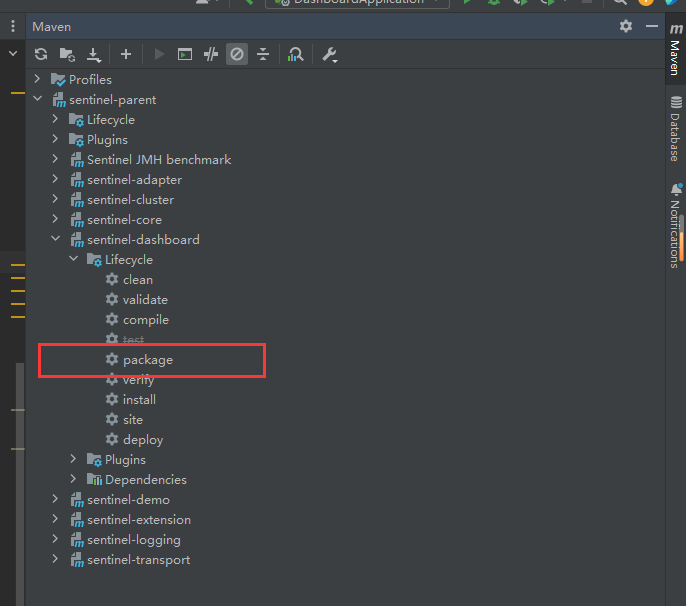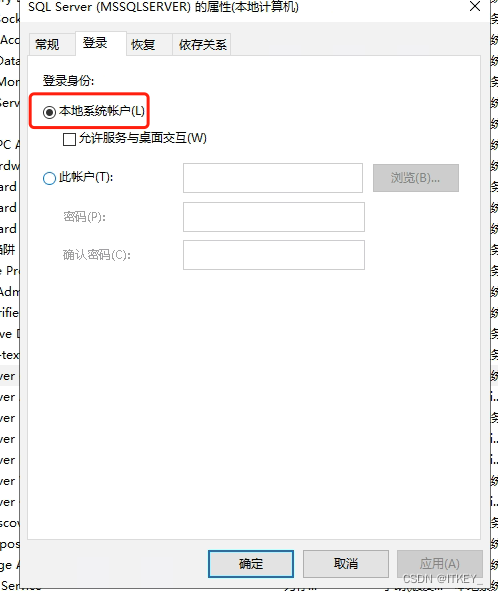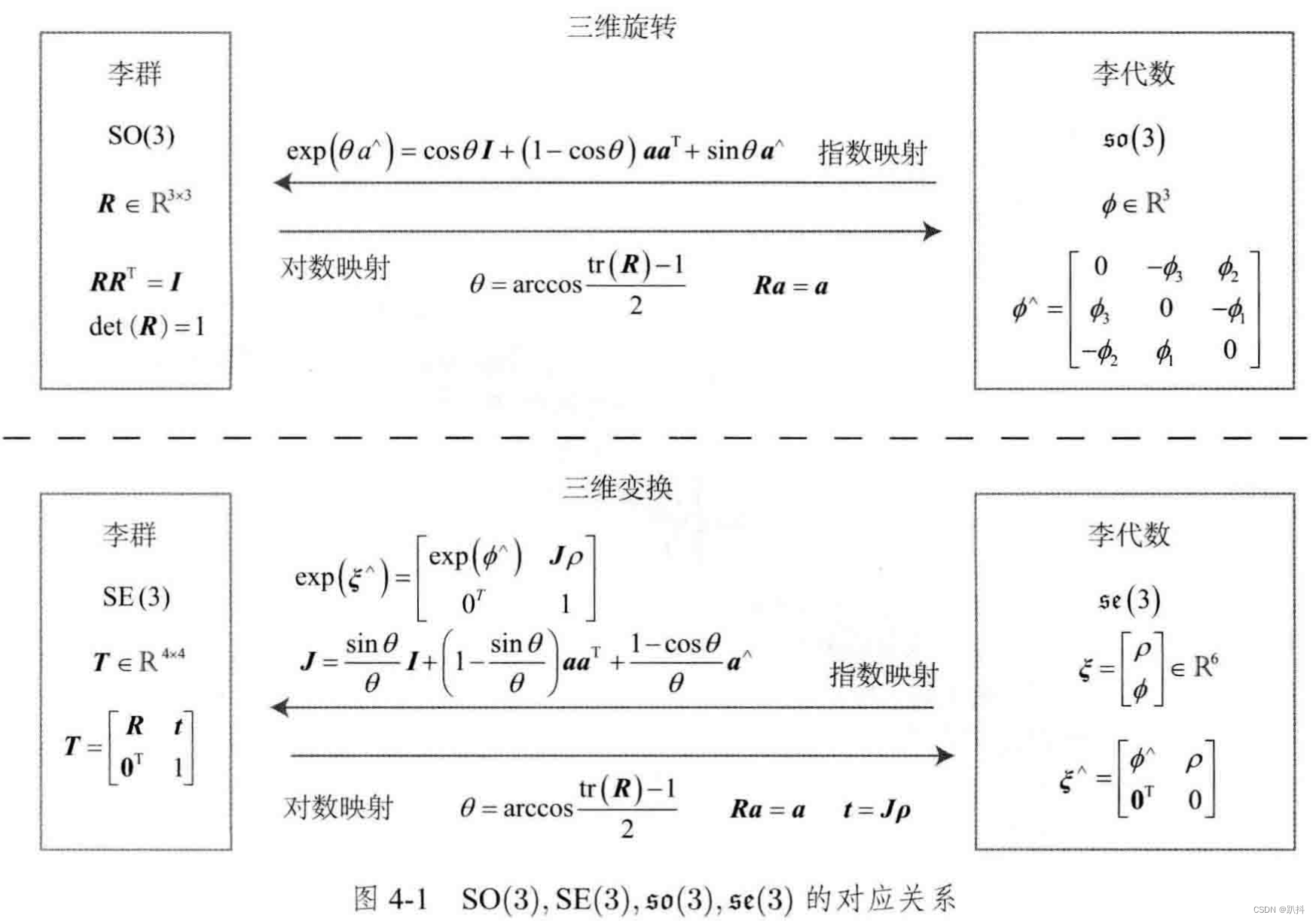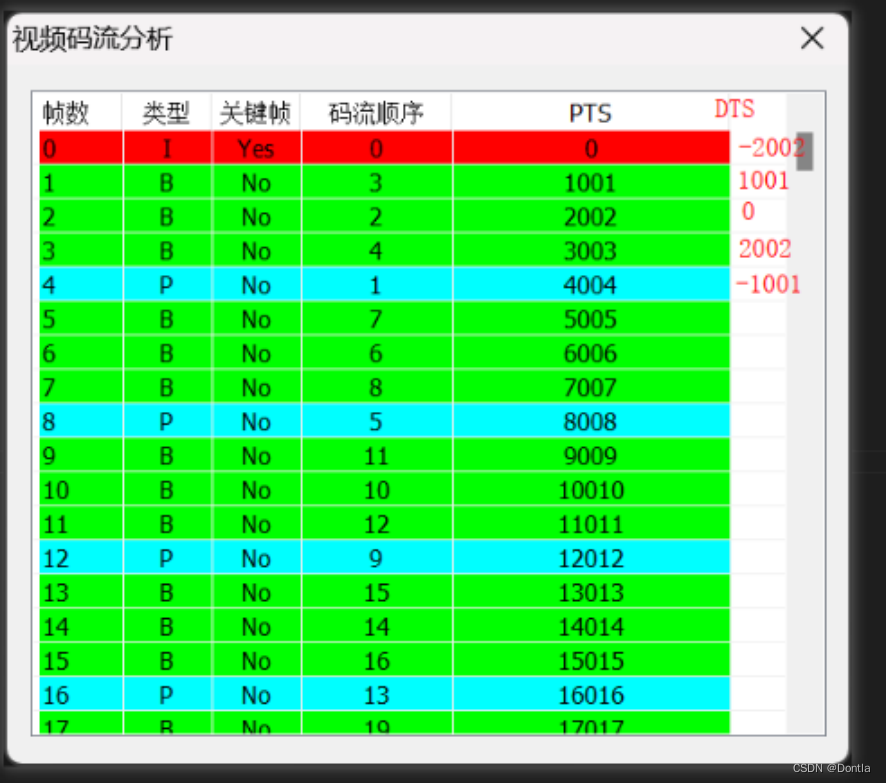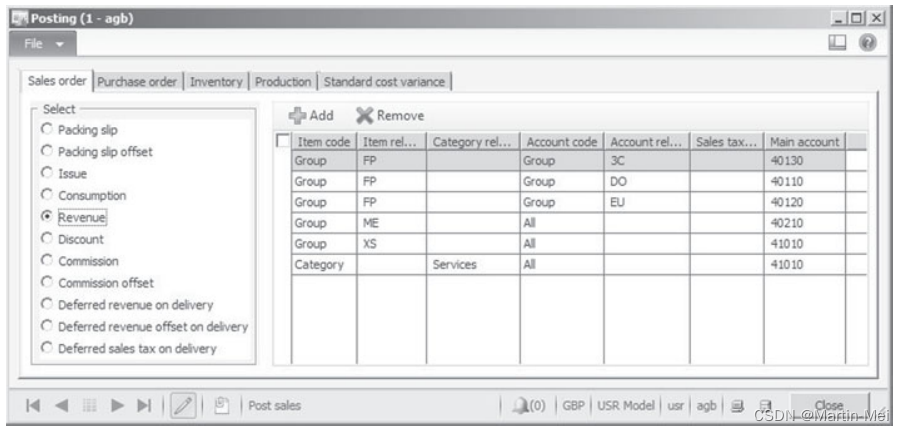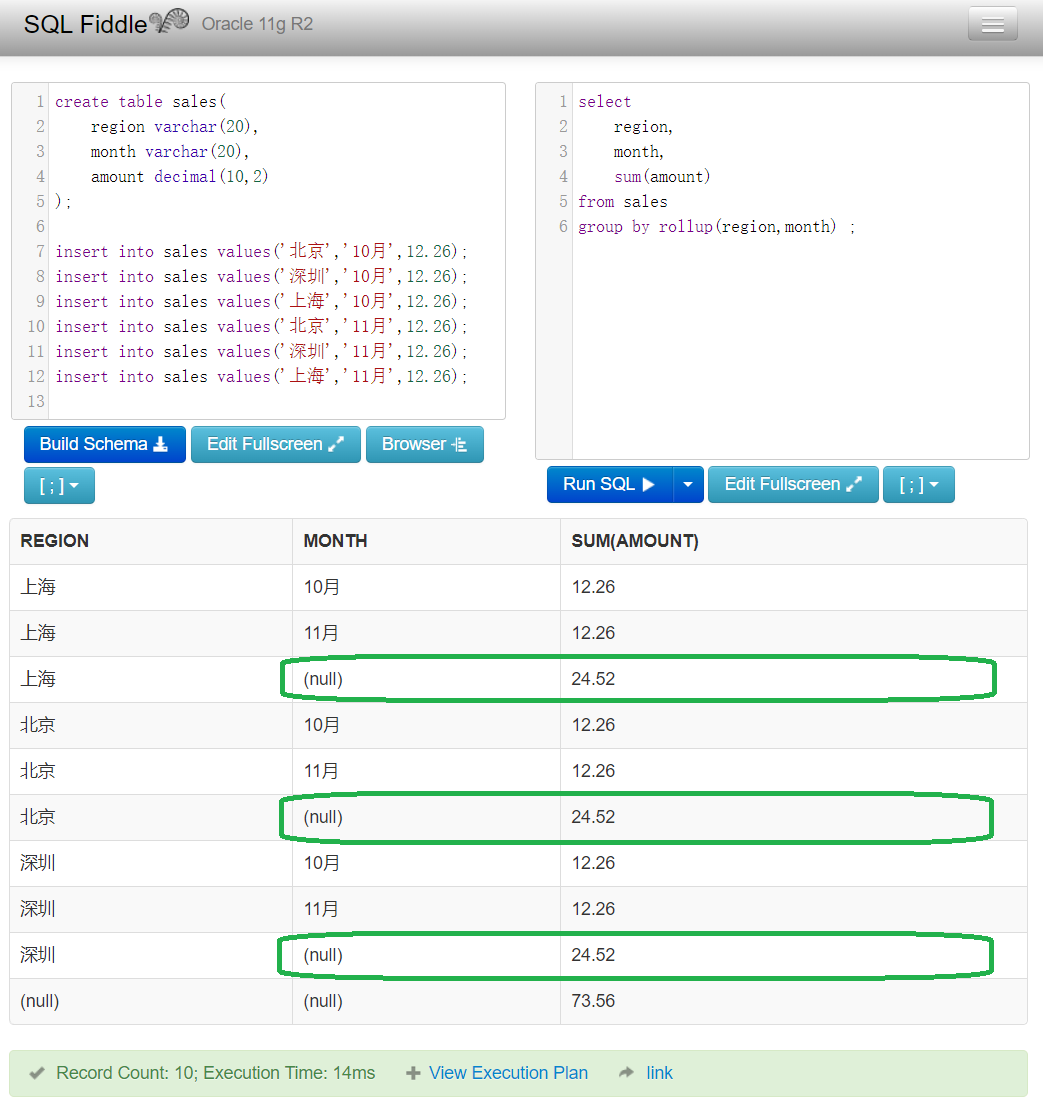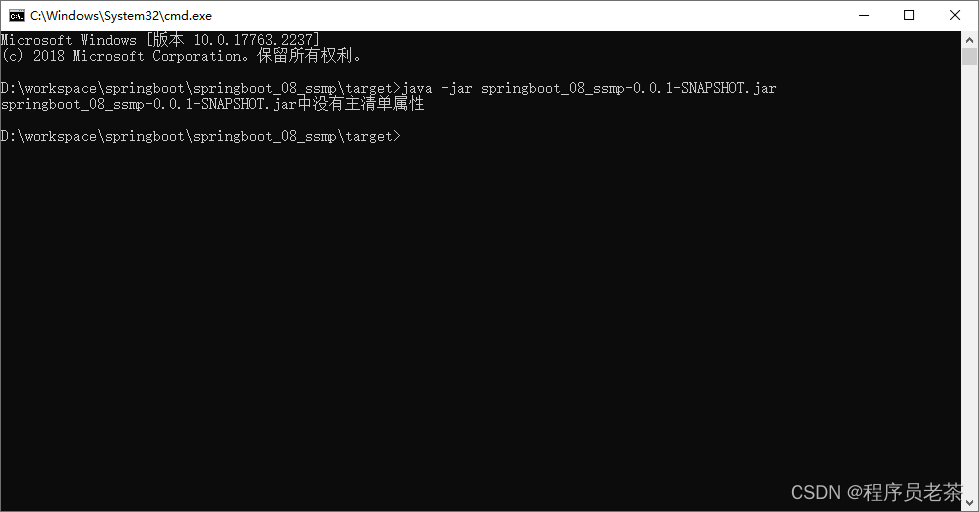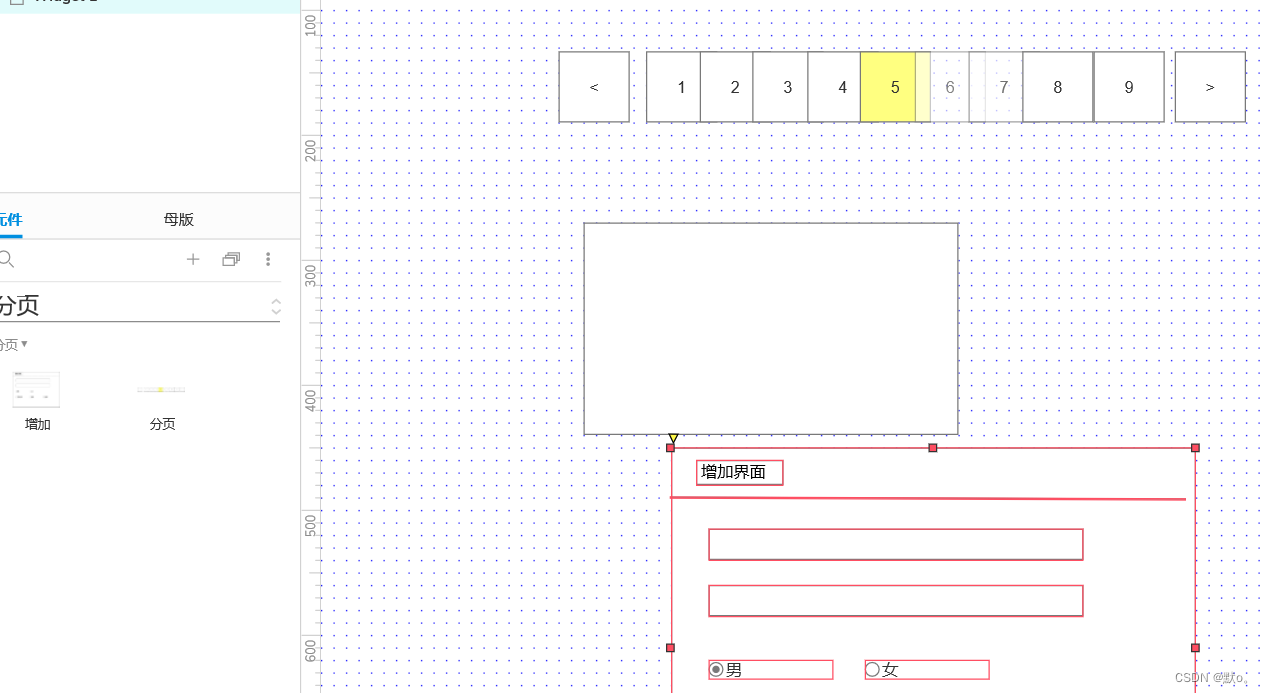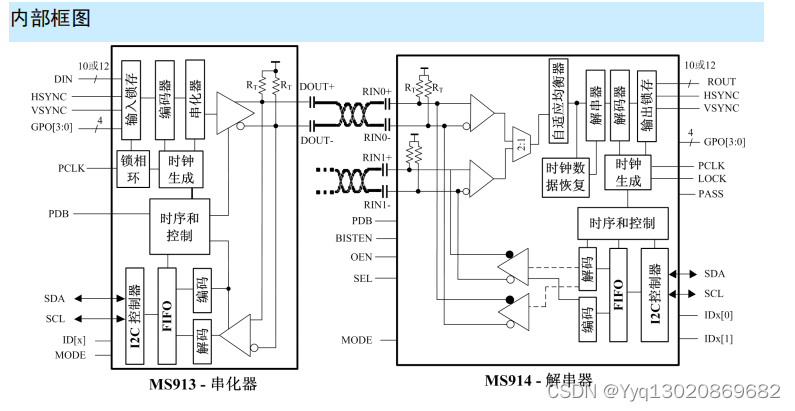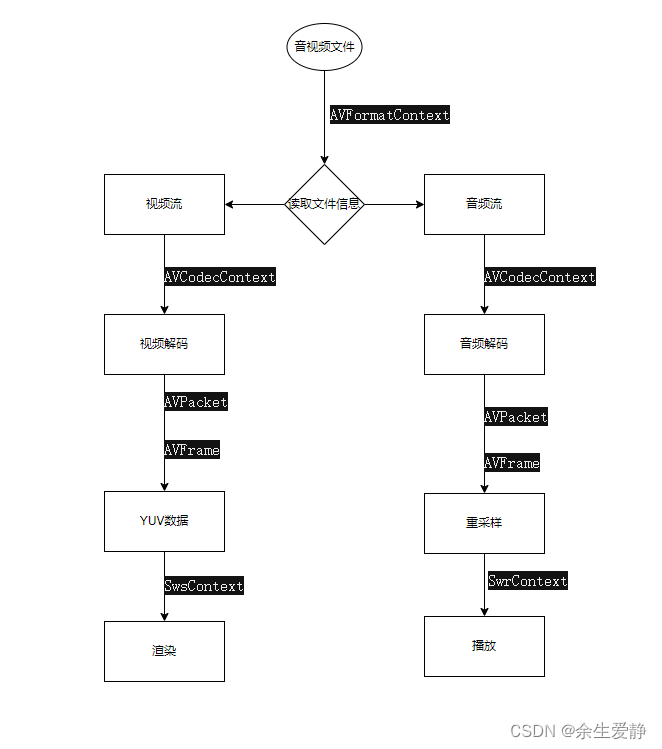
一、客户端选择音视频文件
MainActivity
package com.anniljing.ffmpegnative;
import android.Manifest;
import android.content.ContentResolver;
import android.content.Context;
import android.content.Intent;
import android.database.Cursor;
import android.net.Uri;
import android.os.Bundle;
import android.provider.MediaStore;
import android.provider.OpenableColumns;
import android.text.TextUtils;
import android.util.Log;
import android.view.SurfaceHolder;
import com.anniljing.ffmpegnative.databinding.ActivityMainBinding;
import androidx.activity.result.ActivityResultLauncher;
import androidx.activity.result.contract.ActivityResultContracts;
import androidx.annotation.NonNull;
import androidx.appcompat.app.AppCompatActivity;
import pub.devrel.easypermissions.EasyPermissions;
public class MainActivity extends AppCompatActivity implements SurfaceHolder.Callback {
private static final String TAG = MainActivity.class.getSimpleName();
private ActivityMainBinding binding;
private Context mContext;
private FFmpegPlayer mFFmpegPlayer;
private String[] PERMISSIONS_STORAGE = {Manifest.permission.READ_EXTERNAL_STORAGE, Manifest.permission.WRITE_EXTERNAL_STORAGE};
private ActivityResultLauncher<Intent> mResultLauncher;
private String videoPath;
private SurfaceHolder mSurfaceHolder;
@Override
protected void onCreate(Bundle savedInstanceState) {
super.onCreate(savedInstanceState);
mContext = this;
binding = ActivityMainBinding.inflate(getLayoutInflater());
setContentView(binding.getRoot());
if (!EasyPermissions.hasPermissions(mContext, PERMISSIONS_STORAGE)) {
EasyPermissions.requestPermissions(MainActivity.this, "", 100, PERMISSIONS_STORAGE);
}
mSurfaceHolder = binding.surfaceView.getHolder();
mSurfaceHolder.addCallback(this);
mFFmpegPlayer = new FFmpegPlayer();
mResultLauncher = registerForActivityResult(new ActivityResultContracts.StartActivityForResult(), result -> {
if (result.getResultCode() == RESULT_OK) {
Uri data = result.getData().getData();
Log.e(TAG, "onActivityResult:" + data);
videoPath = getPathFromContentUri(mContext, data);
Log.e(TAG, "getPathFromContentUri:" + videoPath);
}
});
binding.play.setOnClickListener((view) -> {
Intent intent = new Intent(Intent.ACTION_OPEN_DOCUMENT);
intent.addCategory(Intent.CATEGORY_OPENABLE);
intent.setType("video/*");
mResultLauncher.launch(intent);
});
}
@Override
public void onRequestPermissionsResult(int requestCode, @NonNull String[] permissions, @NonNull int[] grantResults) {
super.onRequestPermissionsResult(requestCode, permissions, grantResults);
EasyPermissions.onRequestPermissionsResult(requestCode, permissions, grantResults, this);
}
public static String getPathFromContentUri(Context context, Uri uri) {
if (uri == null) return null;
String filePath = null;
if (uri.getScheme().equals(ContentResolver.SCHEME_CONTENT)) {
ContentResolver contentResolver = context.getContentResolver();
Cursor cursor = contentResolver.query(uri, null, null, null, null);
if (cursor != null && cursor.moveToFirst()) {
int columnIndex = cursor.getColumnIndex(OpenableColumns.DISPLAY_NAME);
if (columnIndex != -1) {
String displayName = cursor.getString(columnIndex);
if (displayName != null) {
filePath = getFilePathFromDisplayName(context, uri, displayName);
}
}
cursor.close();
}
}
return filePath;
}
private static String getFilePathFromDisplayName(Context context, Uri uri, String displayName) {
String filePath = null;
ContentResolver contentResolver = context.getContentResolver();
Uri mediaUri = MediaStore.Video.Media.EXTERNAL_CONTENT_URI;
Cursor cursor = contentResolver.query(mediaUri, null, MediaStore.Video.Media.DISPLAY_NAME + "=?", new String[]{displayName}, null);
if (cursor != null && cursor.moveToFirst()) {
int columnIndex = cursor.getColumnIndex(MediaStore.Video.Media.DATA);
if (columnIndex != -1) {
filePath = cursor.getString(columnIndex);
}
cursor.close();
}
return filePath;
}
@Override
protected void onResume() {
super.onResume();
}
@Override
public void surfaceCreated(@NonNull SurfaceHolder holder) {
if (!TextUtils.isEmpty(videoPath)) {
new Thread(() -> {
if (mFFmpegPlayer != null) {
mFFmpegPlayer.native_start(videoPath, mSurfaceHolder.getSurface());
}
}).start();
}
}
@Override
public void surfaceChanged(@NonNull SurfaceHolder holder, int format, int width, int height) {
}
@Override
public void surfaceDestroyed(@NonNull SurfaceHolder holder) {
}
}
1.1、访问视频文件目录
Intent intent = new Intent(Intent.ACTION_OPEN_DOCUMENT);
intent.addCategory(Intent.CATEGORY_OPENABLE);
intent.setType("video/*");
mResultLauncher.launch(intent);
1.2、解析返回的视频路径
ActivityResultLauncher 是 Android Jetpack 中的一个组件,用于简化处理启动活动并接收结果的过程。它是在 Android API 级别 30(Android 11)引入的新特性,旨在替代过时的 startActivityForResult 方法。
ActivityResultLauncher 使用了一种更简单和类型安全的方式来处理活动结果。它通过注册一个回调并在回调中处理结果,而不需要重写 onActivityResult 方法。这使得代码更加清晰和易于维护。
private ActivityResultLauncher<Intent> mResultLauncher;
mResultLauncher = registerForActivityResult(new ActivityResultContracts.StartActivityForResult(), new ActivityResultCallback<ActivityResult>() {
@Override
public void onActivityResult(ActivityResult result) {
if (result.getResultCode() == RESULT_OK) {
Uri data = result.getData().getData();
Log.e(TAG, "onActivityResult:" + data);
videoPath = getPathFromContentUri(mContext, data);
Log.e(TAG, "getPathFromContentUri:" + videoPath);
}
}
});
public static String getPathFromContentUri(Context context, Uri uri) {
if (uri == null) return null;
String filePath = null;
if (uri.getScheme().equals(ContentResolver.SCHEME_CONTENT)) {
ContentResolver contentResolver = context.getContentResolver();
Cursor cursor = contentResolver.query(uri, null, null, null, null);
if (cursor != null && cursor.moveToFirst()) {
int columnIndex = cursor.getColumnIndex(OpenableColumns.DISPLAY_NAME);
if (columnIndex != -1) {
String displayName = cursor.getString(columnIndex);
if (displayName != null) {
filePath = getFilePathFromDisplayName(context, uri, displayName);
}
}
cursor.close();
}
}
return filePath;
}
private static String getFilePathFromDisplayName(Context context, Uri uri, String displayName) {
String filePath = null;
ContentResolver contentResolver = context.getContentResolver();
Uri mediaUri = MediaStore.Video.Media.EXTERNAL_CONTENT_URI;
Cursor cursor = contentResolver.query(mediaUri, null, MediaStore.Video.Media.DISPLAY_NAME + "=?", new String[]{displayName}, null);
if (cursor != null && cursor.moveToFirst()) {
int columnIndex = cursor.getColumnIndex(MediaStore.Video.Media.DATA);
if (columnIndex != -1) {
filePath = cursor.getString(columnIndex);
}
cursor.close();
}
return filePath;
}
二、声明native方法
FFmpegPlayer.java
package com.anniljing.ffmpegnative;
import android.view.Surface;
public class FFmpegPlayer {
static {
System.loadLibrary("ffmpegnative");
}
public native void native_start(String path, Surface surface);
}
三、jni层实现
native-lib.cpp
#include <jni.h>
#include <string>
#include <android/native_window_jni.h>
#include <unistd.h>
extern "C" {
#include <libavformat/avformat.h>
#include <libavcodec/avcodec.h>
#include <libswscale/swscale.h>
#include "libavutil/imgutils.h"
#include "AndroidLog.h"
JNIEXPORT void JNICALL
Java_com_anniljing_ffmpegnative_FFmpegPlayer_native_1start(JNIEnv *env, jobject thiz, jstring path,
jobject surface) {
const char *mPath = env->GetStringUTFChars(path, 0);
//初始化AVFormatContext
AVFormatContext *avFormatContext = avformat_alloc_context();
AVDictionary *pDictionary = NULL;
av_dict_set(&pDictionary, "timeout", "3000000", 0);
// 打开输入文件
int ret = avformat_open_input(&avFormatContext, mPath, NULL, &pDictionary);
if (ret) {
return;
}
// 获取流信息
avformat_find_stream_info(avFormatContext, NULL);
// 查找视频流
int video_stream_index = -1;
for (int i = 0; i < (avFormatContext->nb_streams); i++) {
if (avFormatContext->streams[i]->codecpar->codec_type == AVMEDIA_TYPE_VIDEO) {
video_stream_index = i;
break;
}
}
LOGD("video stream index:%d", video_stream_index);
AVStream* videoStream = avFormatContext->streams[video_stream_index];
AVRational timeBase = videoStream->time_base;
// 计算帧率
double frameRate = av_q2d(timeBase);
LOGD("video rate:%f",frameRate);
// 获取视频流解码器参数
AVCodecParameters *codecParameters = avFormatContext->streams[video_stream_index]->codecpar;
// 查找视频流解码器
AVCodec *avCodecVideo = avcodec_find_decoder(codecParameters->codec_id);
// 创建解码器上下文
AVCodecContext *avCodecContext = avcodec_alloc_context3(avCodecVideo);
// 设置解码器参数
avcodec_parameters_to_context(avCodecContext, codecParameters);
// 打开解码器
avcodec_open2(avCodecContext, avCodecVideo, NULL);
// 创建图像转换上下文
SwsContext *swsContext = sws_getContext(avCodecContext->width, avCodecContext->height,
avCodecContext->pix_fmt, avCodecContext->width,
avCodecContext->height, AV_PIX_FMT_RGBA, SWS_BILINEAR,
0, 0, 0);
// 获取 ANativeWindow 对象
ANativeWindow *nativeWindow = ANativeWindow_fromSurface(env, surface);
// 设置渲染格式和大小
ANativeWindow_setBuffersGeometry(nativeWindow, avCodecContext->width, avCodecContext->height,
WINDOW_FORMAT_RGBA_8888);
// 分配渲染缓冲区
ANativeWindow_Buffer outBuffer;
//从视频流读取数据包到avpacket
AVPacket *avPacketVideo = av_packet_alloc();
//从音视频文件中读取下一帧
while (av_read_frame(avFormatContext, avPacketVideo) >= 0) {
// 将要解码的数据包送入解码器
avcodec_send_packet(avCodecContext, avPacketVideo);
AVFrame *avFrameVideo = av_frame_alloc();
//从解码器内部缓存中提取解码后的音视频帧
ret = avcodec_receive_frame(avCodecContext, avFrameVideo);
if (ret == AVERROR(EAGAIN)) {
continue;
} else if (ret < 0) {
break;
}
uint8_t *dst_data[4];
int dst_linesize[4];
av_image_alloc(dst_data, dst_linesize, avCodecContext->width, avCodecContext->height,
AV_PIX_FMT_RGBA, 1);
// 锁定 Surface 并获取渲染缓冲区
ANativeWindow_lock(nativeWindow, &outBuffer, NULL);
// 将解码后的帧转换为目标格式
sws_scale(swsContext, avFrameVideo->data, avFrameVideo->linesize, 0, avFrameVideo->height,
dst_data, dst_linesize);
//渲染
uint8_t *first = static_cast<uint8_t *>(outBuffer.bits);
uint8_t *src_data = dst_data[0];
int dstStride = outBuffer.stride * 4;
int src_linesize = dst_linesize[0];
for (int i = 0; i < outBuffer.height; ++i) {
memcpy(first + i * dstStride, src_data + i * src_linesize, dstStride);
}
// 解锁 Surface
ANativeWindow_unlockAndPost(nativeWindow);
sleep(frameRate);
av_frame_free(&avFrameVideo);
}
LOGD("release");
av_packet_unref(avPacketVideo);
ANativeWindow_release(nativeWindow);
sws_freeContext(swsContext);
avcodec_free_context(&avCodecContext);
avformat_close_input(&avFormatContext);
env->ReleaseStringUTFChars(path, mPath);
}
}
3.1、AVFormatContext
AVFormatContext 是 FFmpeg 库中的一个结构体,用于表示音视频封装格式的上下文信息。它包含了音视频流的封装格式、容器级别的参数和状态,以及与输入输出相关的信息。
typedef struct AVFormatContext {
/**
* A class for logging and @ref avoptions. Set by avformat_alloc_context().
* Exports (de)muxer private options if they exist.
*/
const AVClass *av_class;
/**
* 输入容器格式.
* 用于分流,通过avformat_open_input()设置.
*/
struct AVInputFormat *iformat;
/**
* 输出容器格式。
*
* 用于混流,必须在avformat_write_header()调用前设置.
*/
struct AVOutputFormat *oformat;
/**
* Format private data. This is an AVOptions-enabled struct
* if and only if iformat/oformat.priv_class is not NULL.
*
* - muxing: set by avformat_write_header()
* - demuxing: set by avformat_open_input()
*/
void *priv_data;
/**
* I/O 上下文.
*
* - 分流: 在avformat_open_input() 之前设置(用户必须手动释放)或者通过avformat_open_input()
* 自动设置.
* - 混流: 在avformat_write_header()之前设置.用户必须注意及时关闭/释放IO上下文。
*
* 不要设置AVFMT_NOFILE标志给iformat/oformat.flags。因为这种情况下,该值为NULL,混/分流器会通
* 过其它方式处理I/O。
*/
AVIOContext *pb;
/* 后面都是流信息 */
/**
* 信号流属性标志,AVFMTCTX_*的组合.
* 通过libavformat设置.
*/
int ctx_flags;
/**
* AVFormatContext.streams中的元素数量,其实就是流的总数.
*
* 通过avformat_new_stream()设置, 禁止其它代码修改。
*/
unsigned int nb_streams;
/**
* 媒体中,所有流的列表,新的流由avformat_new_stream()创建。
*
* - 分流: 流在avformat_open_input()函数中由libavformat创建。如果AVFMTCTX_NOHEANDER被设置
* 带ctx_flags中,新的流可能出现在av_read_frame()中。
* - 混流: 流在avformat_write_header()函数之前被用户创建
*
* 在avformat_free_context()函数中,通过libavformat释放。
*/
AVStream **streams;
/**
* 输入输出文件名
*
* - 分流: 通过avformat_open_input()设置。
* - 混流: 在avformat_write_header()调用前,可以被使用者设置。
*/
char filename[1024];
/**
* 组件第一帧的位置,用AV_TIME_BASE分数秒表示。禁止直接设置,由AVStream的值推导而来。
*
* - 分流:通过libavformat设置.
*/
int64_t start_time;
/**
* 留的时长,以AV_TIME_BASE分数秒为单位。如果您不知道任何单个流的持续时间,也不设置其中的任何一
* 个,请仅设置此值。 如果没有设置,该值可以被AVStream推导出来
*
* 只用于分流操作,通过libavformat设置。
*/
int64_t duration;
/**
* 总流的比特率以bit/s为单位,如果流不可用,该值为0。如果流文件大小和时长已知,不要直接设置它,
* FFmpeg会自动计算。
*/
int64_t bit_rate;
unsigned int packet_size;
int max_delay;
/**
* 修改分/混流器操作的标志,一个AVFMT_FLAG_*的组合。
* 在avformat_open_input() / avformat_write_header()调用之前用户自行设置.
*/
int flags;
#define AVFMT_FLAG_GENPTS 0x0001 ///< Generate missing pts even if it requires parsing future frames.
#define AVFMT_FLAG_IGNIDX 0x0002 ///< Ignore index.
#define AVFMT_FLAG_NONBLOCK 0x0004 ///< Do not block when reading packets from input.
#define AVFMT_FLAG_IGNDTS 0x0008 ///< Ignore DTS on frames that contain both DTS & PTS
#define AVFMT_FLAG_NOFILLIN 0x0010 ///< Do not infer any values from other values, just return what is stored in the container
#define AVFMT_FLAG_NOPARSE 0x0020 ///< Do not use AVParsers, you also must set AVFMT_FLAG_NOFILLIN as the fillin code works on frames and no parsing -> no frames. Also seeking to frames can not work if parsing to find frame boundaries has been disabled
#define AVFMT_FLAG_NOBUFFER 0x0040 ///< Do not buffer frames when possible
#define AVFMT_FLAG_CUSTOM_IO 0x0080 ///< The caller has supplied a custom AVIOContext, don't avio_close() it.
#define AVFMT_FLAG_DISCARD_CORRUPT 0x0100 ///< Discard frames marked corrupted
#define AVFMT_FLAG_FLUSH_PACKETS 0x0200 ///< Flush the AVIOContext every packet.
/**
* 混流时,尽量避免将随机/不可控的数据写入输出中,包括随机IDs,实时时间戳/日期,混流器版本等等。
*
* 该标记主要用于测试
*/
#define AVFMT_FLAG_BITEXACT 0x0400
#define AVFMT_FLAG_MP4A_LATM 0x8000 ///< Enable RTP MP4A-LATM payload
#define AVFMT_FLAG_SORT_DTS 0x10000 ///< try to interleave outputted packets by dts (using this flag can slow demuxing down)
#define AVFMT_FLAG_PRIV_OPT 0x20000 ///< Enable use of private options by delaying codec open (this could be made default once all code is converted)
#if FF_API_LAVF_KEEPSIDE_FLAG
#define AVFMT_FLAG_KEEP_SIDE_DATA 0x40000 ///< Don't merge side data but keep it separate. Deprecated, will be the default.
#endif
#define AVFMT_FLAG_FAST_SEEK 0x80000 ///< Enable fast, but inaccurate seeks for some formats
#define AVFMT_FLAG_SHORTEST 0x100000 ///< Stop muxing when the shortest stream stops.
#define AVFMT_FLAG_AUTO_BSF 0x200000 ///< Wait for packet data before writing a header, and add bitstream filters as requested by the muxer
/**
* 从指定容器格式的输入中读取最大数据的大小。
* 仅用于分流操作,用户可以在avformat_open_input()函数前设置。
*/
int64_t probesize;
/**
* 从指定容器格式的输入中读取的最大数据时长(以AV_TIME_BASE为单位)。
* 仅用于分流操作,在avformat_find_stream_info()调用前设置。为0时,让avformat自动选择。
*/
int64_t max_analyze_duration;
const uint8_t *key;
int keylen;
unsigned int nb_programs;
AVProgram **programs;
/**
* 强制视频codec_id.
* 分流操作: 用户设置。
*/
enum AVCodecID video_codec_id;
/**
* 强制音频codec_id.
* 分流操作: 用户设置。
*/
enum AVCodecID audio_codec_id;
/**
* 强制字幕codec_id.
* 分流操作: 用户设置。
*/
enum AVCodecID subtitle_codec_id;
/**
* 每个索引使用的内存最大值(以字节为单位)。
* 如果索引超出内存限制,项目会被丢弃以保持较小的内存占用。这回导致seeking较慢和不准确(取决于分流
* 器)
* 完全内存索引是强制性的分解器将忽略这一点。
* - 混流操作: 不实用
* - 分流操作: 由用户设置
*/
unsigned int max_index_size;
/**
* 从设备获取的实时帧缓冲的最大内存大小(以字节为单位)
*/
unsigned int max_picture_buffer;
/**
* AVChapter数组中的章节数量。
* 混流时,章节信息通畅会写在文件头中,所以nb_chapters应该在写文件头之前被初始化。一些混流器(例如
* mov、mkv)可以将章节写在预告中。为了在预告中撰写章节,在write_header调用时nb_chapters必须为
* 并且在write_trailer被调用时为非0数。
* - 混流操作: 用户设置
* - 分流操作: libavformat设置
*/
unsigned int nb_chapters;
AVChapter **chapters;
/**
* 适用于整个文件的元数据。
*
* - 分流操作: libavformat在avformat_open_input()函数中设置。
* - 混流操作: 调用者可以在avformat_write_header()函数调用前设置。
*
* 通过libavformat在函数avformat_free_context()中释放。
*/
AVDictionary *metadata;
/**
* 从Unix纪元(1970年1月1日00:00)开始,以真实世界时间开始流的开始时间,以微秒为单位。 即,流在现
* 实世界被使用的pts=0时间。
* - 混流操作: 在avformat_write_header()调用前被调用者设置。如果设置为0或AV_NOPTS_VALUE,则
* 将使用当前时间(wall-time)。
* - 分流操作: 由libavformat设置. 如果AV_NOPTS_VALUE未知,注意,一定数量的帧被获取后,该值可能
* 变得已知。
*/
int64_t start_time_realtime;
/**
* 用于确定avformat_find_stream_info()中帧率的帧数。
* 仅用于分流,在avformat_find_stream_info()调用前由调用者设置
*/
int fps_probe_size;
/**
* 错误识别; 较高的值将检测到更多的错误,但可能会错误检测一些或多或少有效的部分作为错误。 在
* avformat_open_input()之前由调用方设置的仅用于解分流。
*/
int error_recognition;
/**
* I/O层自定义中断回调函数。
*
* 分流操作: avformat_open_input()调用前由用户设置.
* 混流操作: avformat_write_header()调用前由用户设置(主要用于AVFMT_NOFILE 格式)。如果用它来
* 打开文件,该回调也会传递给avio_open2().
*/
AVIOInterruptCB interrupt_callback;
/**
* 启用debug标志。
*/
int debug;
#define FF_FDEBUG_TS 0x0001
/**
* Maximum buffering duration for interleaving.
*
* To ensure all the streams are interleaved correctly,
* av_interleaved_write_frame() will wait until it has at least one packet
* for each stream before actually writing any packets to the output file.
* When some streams are "sparse" (i.e. there are large gaps between
* successive packets), this can result in excessive buffering.
*
* This field specifies the maximum difference between the timestamps of the
* first and the last packet in the muxing queue, above which libavformat
* will output a packet regardless of whether it has queued a packet for all
* the streams.
*
* Muxing only, set by the caller before avformat_write_header().
*/
int64_t max_interleave_delta;
/**
* 允许非标准和实验性扩展
* @see AVCodecContext.strict_std_compliance
*/
int strict_std_compliance;
/**
* 供用户检测文件上发生事件的标志。事件处理后,用户必须清除标志。AVFMT_EVENT_FLAG_ *的组合。
*/
int event_flags;
#define AVFMT_EVENT_FLAG_METADATA_UPDATED 0x0001 ///< The call resulted in updated metadata.
/**
* 在等待第一个时间戳时要读取的最大数据包数。仅用于解码。
*/
int max_ts_probe;
/**
* 避免混流过程中的负面时间戳。 AVFMT_AVOID_NEG_TS_ *常量中的任何值。 请注意,这只适用于使用
* av_interleaved_write_frame。 (interleave_packet_per_dts正在使用中)
* - 混流: 用户设置
* - 分流: 不使用
*/
int avoid_negative_ts;
#define AVFMT_AVOID_NEG_TS_AUTO -1 ///< Enabled when required by target format
#define AVFMT_AVOID_NEG_TS_MAKE_NON_NEGATIVE 1 ///< Shift timestamps so they are non negative
#define AVFMT_AVOID_NEG_TS_MAKE_ZERO 2 ///< Shift timestamps so that they start at 0
/**
* 传输流id。
* 这将被移入分流器的私有选项。 因此没有API / ABI兼容性
*/
int ts_id;
/**
* 音频预加载以微秒为单位。 请注意,并非所有格式都支持此功能,如果在不支持的情况下使用它,则可能会发
* 生不可预知的情况。
* - 编码: 用户设置
* - 解码: 不使用
*/
int audio_preload;
/**
* 最大块时间(以微秒为单位)。 请注意,并非所有格式都支持此功能,如果在不支持的情况下使用它,则可能
* 会发生不可预知的情况。
* - 编码: 用户设置
* - 解码: 不使用
*/
int max_chunk_duration;
/**
* 最大块大小(以字节为单位)。注意,并非所有格式都支持此功能,如果在不支持的情况下使用它,可能会发
* 生不可预知的情况。
* - 编码: 用户设置
* - 解码: 不使用
*/
int max_chunk_size;
/**
* 强制使用wallclock时间戳作为pts / dts数据包在B帧存在的情况下存在未定义的结果。
* - 编码: 不使用
* - 解码: 用户设置
*/
int use_wallclock_as_timestamps;
/**
* avio标志,用于强制使用AVIO_FLAG_DIRECT。
* - 编码: 不使用
* - 解码: 用户设置
*/
int avio_flags;
/**
* 时长字段可以通过各种方式进行计算,并且可以使用此字段了解时长是如何计算的。
* - 编码: 不使用
* - 解码: 用户读取
*/
enum AVDurationEstimationMethod duration_estimation_method;
/**
* 打开流时跳过初始字节
* - 编码: 不使用
* - 解码: 用户设置
*/
int64_t skip_initial_bytes;
/**
* 正确的单个时间戳溢出
* - 编码: 不使用
* - 解码: 用户设置
*/
unsigned int correct_ts_overflow;
/**
* 强制seeking到任意帧(即使没有关键帧)
* - 编码: 不使用
* - 解码: 用户设置
*/
int seek2any;
/**
* 在每个数据包之后刷新I / O上下文。
* - 编码: 用户设置
* - 解码: 不使用
*/
int flush_packets;
/**
* 格式探测分数。 最高分是AVPROBE_SCORE_MAX,当分流器探测格式时设置它。
* - 编码: 不使用
* - 解码: avformat设置,用户读取
*/
int probe_score;
/**
* 要最大限度地读取以识别格式的字节数。
* - 编码: 不使用
* - 解码: 用户设置
*/
int format_probesize;
/**
* ',' 分割的支持的解码器刘表,如果值为NULL,表示支持所有解码器。
* - 编码: 不使用
* - 解码: 用户设置
*/
char *codec_whitelist;
/**
* ',' 分割的支持的分流器列表,如果值为NULL,所有分流器都支持。
* - 编码: 不使用
* - 解码: 用户设置
*/
char *format_whitelist;
/**
* libavformat内部使用的不透明字段。 不得以任何方式访问。
*/
AVFormatInternal *internal;
/**
* IO重定位标志。
* 当基础IO上下文读指针重新定位时,例如在执行基于字节的查找时,这由avformat设置。 分流器可以使用
* 标志来检测这种变化。
*/
int io_repositioned;
/**
* 强制视频解码器。强制数据解码器。这允许使用强制指定的解码器,即使有多个相同的codec_id.
* 分流: 用户设置
*/
AVCodec *video_codec;
/**
* 强制音频解码器。强制数据解码器。这允许使用强制指定的解码器,即使有多个相同的codec_id.
* 分流: 用户设置
*/
AVCodec *audio_codec;
/**
* 强制数据解码器。这允许使用强制指定的解码器,即使有多个相同的codec_id.
* 分流: 用户设置
*/
AVCodec *subtitle_codec;
/**
* 强制数据解码器。这允许使用强制指定的解码器,即使有多个相同的codec_id.
* 分流: 用户设置
*/
AVCodec *data_codec;
/**
* 在原数据头中,充当填充(分割)的字节数
* 分流: 不使用
* 混流: 用户可以通过av_format_set_metadata_header_padding设置.
*/
int metadata_header_padding;
/**
* 用户数据,这是用户的私有数据空间。
*/
void *opaque;
/**
* 设备用应用通讯的回调。
*/
av_format_control_message control_message_cb;
/**
* 输出时移,以微妙为单位。
* 混流: 用户设置
*/
int64_t output_ts_offset;
/**
* 转储格式分隔符。可以是", " 或者 "\n" 等
* - 混流: 用户设置
* - 分流: 用户设置
*/
uint8_t *dump_separator;
/**
* 强制数据codec_id.
* 分流操作: 用户设置
*/
enum AVCodecID data_codec_id;
#if FF_API_OLD_OPEN_CALLBACKS
/**
* Called to open further IO contexts when needed for demuxing.
*
* This can be set by the user application to perform security checks on
* the URLs before opening them.
* The function should behave like avio_open2(), AVFormatContext is provided
* as contextual information and to reach AVFormatContext.opaque.
*
* If NULL then some simple checks are used together with avio_open2().
*
* Must not be accessed directly from outside avformat.
* @See av_format_set_open_cb()
*
* Demuxing: Set by user.
*
* @deprecated Use io_open and io_close.
*/
attribute_deprecated
int (*open_cb)(struct AVFormatContext *s, AVIOContext **p, const char *url, int flags, const AVIOInterruptCB *int_cb, AVDictionary **options);
#endif
/**
* ',' 符号分割的支持协议列表separated list of allowed protocols.
* - 编码: 不使用
* - 解码: 用户设置
*/
char *protocol_whitelist;
/*
* A callback for opening new IO streams.
*
* Whenever a muxer or a demuxer needs to open an IO stream (typically from
* avformat_open_input() for demuxers, but for certain formats can happen at
* other times as well), it will call this callback to obtain an IO context.
*
* @param s the format context
* @param pb on success, the newly opened IO context should be returned here
* @param url the url to open
* @param flags a combination of AVIO_FLAG_*
* @param options a dictionary of additional options, with the same
* semantics as in avio_open2()
* @return 0 on success, a negative AVERROR code on failure
*
* @note Certain muxers and demuxers do nesting, i.e. they open one or more
* additional internal format contexts. Thus the AVFormatContext pointer
* passed to this callback may be different from the one facing the caller.
* It will, however, have the same 'opaque' field.
*/
int (*io_open)(struct AVFormatContext *s, AVIOContext **pb, const char *url,
int flags, AVDictionary **options);
/**
* 将AVFormateContext.io_open()打开流关闭的回调。
*/
void (*io_close)(struct AVFormatContext *s, AVIOContext *pb);
/**
* ',' 符分割的不支持协议列表。
* - 编码: 不使用
* - 解码: 用户设置
*/
char *protocol_blacklist;
/**
* 最大streams数量
* - 编码: 不使用
* - 解码: 用户设定
*/
int max_streams;
} AVFormatContext;
3.2、AVCodecContext
AVCodecContext 是 FFmpeg 库中的一个结构体,用于描述音视频编解码器的上下文信息。它包含了音视频编解码器的参数和状态,用于配置和控制编解码的过程。
typedef struct AVCodec {
/**
* 编解码器实现的名称。
* 该名称是全局唯一的(但编码器和解码器可以共享名称)。
* 这是从用户角度查找编解码器的主要方式。
*/
const char *name;
/**
* 编解码器的描述性名称,比前面的名称更具可读性。
* 您应该使用NULL_IF_CONFIG_SMALL()宏来定义它。
*/
const char *long_name;
enum AVMediaType type;//编解码器类型,视频,音频,或者字幕
enum AVCodecID id;//全局唯一的编解码器ID
/**
* Codec capabilities.
* see AV_CODEC_CAP_*
*/
int capabilities;
const AVRational *supported_framerates; ///支持帧率的数组,用于视频
const enum AVPixelFormat *pix_fmts; ///< 支持的像素格式数组,或者如果未知,则为NULL,数组以-1结尾。用于视频
const int *supported_samplerates; ///< 支持的音频采样率数组,或者如果未知,则为NULL,数组以0结尾。用于音频
const enum AVSampleFormat *sample_fmts; ///<支持的采样数组,或者如果未知,则为NULL,数组以-1结尾。用于音频
const uint64_t *channel_layouts; ///< 支持声道数组,如果未知,则为NULL。 数组以0结尾,用于音频
uint8_t max_lowres; ///< maximum value for lowres supported by the decoder
const AVClass *priv_class; ///< 私有上下文的AVClass
const AVProfile *profiles; ///< 已识别配置文件的数组,或者如果未知,则为NULL,数组以{FF_PROFILE_UNKNOWN}结尾
/*****************************************************************
* 以下所有的字段都不是公共API,不可在libavcodec以外使用。以后新增字段都会放在上面。
*****************************************************************
*/
int priv_data_size;//私有数据大小
struct AVCodec *next;
/**
* @name Frame-level threading support functions
* @{
*/
/**
* 如果已定义,则在创建线程上下文时调用它们。
* 如果编解码器在init()中分配可写表,请在此处重新分配它们。
* priv_data将被设置为原件的副本。
*/
int (*init_thread_copy)(AVCodecContext *);
/**
* Copy necessary context variables from a previous thread context to the current one.
* If not defined, the next thread will start automatically; otherwise, the codec
* must call ff_thread_finish_setup().
*
* dst and src will (rarely) point to the same context, in which case memcpy should be skipped.
*/
int (*update_thread_context)(AVCodecContext *dst, const AVCodecContext *src);
/** @} */
/**
* 私有编解码器默认值。
*/
const AVCodecDefault *defaults;
/**
* 初始化时从avcodec_register()调用的编解码器静态数据。
*/
void (*init_static_data)(struct AVCodec *codec);
int (*init)(AVCodecContext *);
int (*encode_sub)(AVCodecContext *, uint8_t *buf, int buf_size,
const struct AVSubtitle *sub);
/**
* Encode data to an AVPacket.
*
* @param avctx codec context
* @param avpkt output AVPacket (may contain a user-provided buffer)
* @param[in] frame AVFrame containing the raw data to be encoded
* @param[out] got_packet_ptr encoder sets to 0 or 1 to indicate that a
* non-empty packet was returned in avpkt.
* @return 0 on success, negative error code on failure
*/
int (*encode2)(AVCodecContext *avctx, AVPacket *avpkt, const AVFrame *frame,
int *got_packet_ptr);
int (*decode)(AVCodecContext *, void *outdata, int *outdata_size, AVPacket *avpkt);
int (*close)(AVCodecContext *);
/**
* Decode/encode API with decoupled packet/frame dataflow. The API is the
* same as the avcodec_ prefixed APIs (avcodec_send_frame() etc.), except
* that:
* - never called if the codec is closed or the wrong type,
* - AVPacket parameter change side data is applied right before calling
* AVCodec->send_packet,
* - if AV_CODEC_CAP_DELAY is not set, drain packets or frames are never sent,
* - only one drain packet is ever passed down (until the next flush()),
* - a drain AVPacket is always NULL (no need to check for avpkt->size).
*/
int (*send_frame)(AVCodecContext *avctx, const AVFrame *frame);
int (*send_packet)(AVCodecContext *avctx, const AVPacket *avpkt);
int (*receive_frame)(AVCodecContext *avctx, AVFrame *frame);
int (*receive_packet)(AVCodecContext *avctx, AVPacket *avpkt);
/**
* Flush buffers.
* Will be called when seeking
*/
void (*flush)(AVCodecContext *);
/**
* Internal codec capabilities.
* See FF_CODEC_CAP_* in internal.h
*/
int caps_internal;
} AVCodec;
3.3、AVPacket
AVPacket 是 FFmpeg 库中的一个结构体,用于存储音视频数据的压缩数据包。它是 FFmpeg 中处理音视频数据的重要数据结构之一。
AVPacket 结构体用于存储音视频数据的压缩数据,例如从容器中读取的音视频帧,或者编码后的音视频帧待写入容器。它包含了数据的时间戳、大小和相关信息,用于解码和编码过程中的数据处理。
在使用 AVPacket 时,可以通过 FFmpeg 的函数和接口进行创建、释放、填充数据等操作。例如,av_packet_alloc 函数用于分配一个新的 AVPacket 对象,av_packet_free 函数用于释放 AVPacket 对象,av_packet_ref 函数用于创建 AVPacket 的副本,av_packet_rescale_ts 函数用于对时间戳进行重新缩放等。
typedef struct AVPacket {
AVBufferRef *buf; // data的buffer引用指针计数结构体
int64_t pts; // 控制显示的pts时间
int64_t dts; // 控制解码的dts时间
uint8_t *data; // 媒体数据buffer的指针
int size; // 数据大小
int stream_index; // 流index
int flags; // AV_PKT_FLAG值的组合
AVPacketSideData *side_data; // 容器可以提供的附加数据包数据。 数据包可以包含几种类型的辅助信息。
// AVStream-> time_base单位中此数据包的持续时间,如果未知则为0。 在演示顺序中等于next_pts - this_pts。
int64_t duration;
int64_t pos; // 流中的字节位置,如果未知则为-1
} AVPacket;
3.4、AVFrame
AVFrame 是 FFmpeg 库中的一个结构体,用于表示音视频帧的数据。它包含了一个音频帧或视频帧的各种信息,如像素数据、采样数据、时间戳等。
typedef struct AVStream {
int index; /**< 在AVFormatContext中的stream索引 */
/**
* 特定格式的stream id。
* 解码: 由libavformat设定
* 编码: 如果未设置,则由用户通过libavformat设置
*/
int id;
#if FF_API_LAVF_AVCTX
/**
* @deprecated use the codecpar struct instead
*/
attribute_deprecated
AVCodecContext *codec;
#endif
void *priv_data;
#if FF_API_LAVF_FRAC
/**
* @deprecated this field is unused
*/
attribute_deprecated
struct AVFrac pts;
#endif
/**
* 这是表示帧时间戳的基本时间单位(以秒为单位)。
*
* 解码: libavformat设置
* 编码: 可以在avformat_write_header()之前由调用者设置,以向混流器提供关于所需单位时间的
* 提示。在avformat_write_header()中,混流器将用实际用于写入文件的时间戳(根据格式可能与
* 用户提供的时间戳相关或不相关)的单位时间覆盖该字段。
*/
AVRational time_base;
/**
* 解码: 流显示序列中的第一帧pts时间,基于流时间(in stream time base.)。
* 只有当你百分百确定该值就是真实的第一帧的pts时间,才可以设置它
* 该值可能未定义(AV_NOPTS_VALUE).
* @note The ASF header does NOT contain a correct start_time the ASF
* 分流器禁止设置该值。
*/
int64_t start_time;
/**
* 解码: 流时长,基于流时间(in stream time base.)
* 如果一个源文件指定了比特率,而未指定流时长,该值将由比特率和文件大小估算。
*
* 编码: May be set by the caller before 用户可以在avformat_write_header()调用前设
* 置,提示混流器估算时长
*/
int64_t duration;
int64_t nb_frames; ///< 表示该流的已知帧数,或者为0
int disposition; /**< AV_DISPOSITION_* 推荐比特字段 */
enum AVDiscard discard; ///< 选择那些数据包可以被丢掉而不用被分流器分流。
/**
* 采样率(如果未知,该值为0)
* - 编码: 用户设置.
* - 解码: libavformat设置.
*/
AVRational sample_aspect_ratio;
AVDictionary *metadata;//原数据信息
/**
* 平均帧率
*
* - 分流: 在创建流时或者才函数avformat_find_stream_info()函数中可能被设置。
* - 混流: 可能在avformat_write_header()函数调用前被设置
*/
AVRational avg_frame_rate;
/**
* 对于设置有AV_DISPOSITION_ATTACHED_PIC标志的流, 该数据包会包含该附加图片(专辑图片什么的)
*
* 解码: libavformat设置, 不能被用户修改。
* 编码: 不使用
*/
AVPacket attached_pic;
/**
* An array of side data that applies to the whole stream (i.e. the
* container does not allow it to change between packets).
*
* There may be no overlap between the side data in this array and side data
* in the packets. I.e. a given side data is either exported by the muxer
* (demuxing) / set by the caller (muxing) in this array, then it never
* appears in the packets, or the side data is exported / sent through
* the packets (always in the first packet where the value becomes known or
* changes), then it does not appear in this array.
*
* - demuxing: Set by libavformat when the stream is created.
* - muxing: May be set by the caller before avformat_write_header().
*
* Freed by libavformat in avformat_free_context().
*
* @see av_format_inject_global_side_data()
*/
AVPacketSideData *side_data;
/**
* The number of elements in the AVStream.side_data array.
*/
int nb_side_data;
/**
* 供用户检测流上发生的时间标志。 事件处理后,用户必须清除标志。 AVSTREAM_EVENT_FLAG_ *的组合。
*/
int event_flags;
#define AVSTREAM_EVENT_FLAG_METADATA_UPDATED 0x0001 ///< The call resulted in updated metadata.
/*****************************************************************
*该行下面的所有字段不是公共API的一部分。 它们不能在libavformat之外使用,并且可以随意更改和删
*除。内部提示:请注意,物理删除这些字段将会破坏ABI。 用空字段替换已删除的字段,并向
*AVStreamInternal添加新字段。
*****************************************************************
*/
/**
* avformat_find_stream_info()函数使用的内部流信息
*/
#define MAX_STD_TIMEBASES (30*12+30+3+6)
struct {
int64_t last_dts;
int64_t duration_gcd;
int duration_count;
int64_t rfps_duration_sum;
double (*duration_error)[2][MAX_STD_TIMEBASES];
int64_t codec_info_duration;
int64_t codec_info_duration_fields;
/**
* 0 -> 解码器还未被检索到
* >0 -> 解码器已被找到
* <0 -> decoder with codec_id == -found_decoder has not been found
*/
int found_decoder;
int64_t last_duration;
/**
* 这些字段用于估算平均帧率
*/
int64_t fps_first_dts;
int fps_first_dts_idx;
int64_t fps_last_dts;
int fps_last_dts_idx;
} *info;
int pts_wrap_bits; /**< number of bits in pts (used for wrapping control) */
// 时间戳生成支持:
/**
* 最后同步点的时间戳。
*
* 当AVCodecParserContext.dts_sync_point >= 0 时初始化,并且接受一个当前容器的DTS。否
* 则,AV_NOPTS_VALUE使用默认值
*/
int64_t first_dts;
int64_t cur_dts;
int64_t last_IP_pts;
int last_IP_duration;
/**
* 编解码器探测缓存的数据包数量
*/
int probe_packets;
/**
* avformat_find_stream_info()调用期间,已经被分流的帧数
*/
int codec_info_nb_frames;
/* av_read_frame() 支持 */
enum AVStreamParseType need_parsing;
struct AVCodecParserContext *parser;
/**
* 正在混流操作的流在数据包缓冲中的最后一个数据包
*/
struct AVPacketList *last_in_packet_buffer;
AVProbeData probe_data;
#define MAX_REORDER_DELAY 16
int64_t pts_buffer[MAX_REORDER_DELAY+1];
AVIndexEntry *index_entries; /**< 只有当格式不支持本地seeking时使用*/
int nb_index_entries;
unsigned int index_entries_allocated_size;
/**
* 流的真实基准帧率.
* 这是所有时间戳可以准确表示的最低帧速率(它是流中所有帧速率的最小公倍数)。 请注意,这个值只
* 是一个猜测! 例如,如果时基为1/90000,并且所有帧都具有约3600或1800个计时器滴答,则
* r_frame_rate将为50/1。
*
* avformat以外的代码应该使用此字段访问:
* av_stream_get/set_r_frame_rate(stream)
*/
AVRational r_frame_rate;
/**
* 流标志符
* 这是MPEG-TS流标识符 +1
* 0 意味着未知
*/
int stream_identifier;
int64_t interleaver_chunk_size;
int64_t interleaver_chunk_duration;
/**
* 流探测状态
* -1 -> 探测完毕
* 0 -> 没有探测请求
* rest -> 以request_probe作为接受的最低分数执行探测。
* 不是公共API的一部分
*/
int request_probe;
/**
* 表示直到下一个关键帧的所有内容都应该丢弃。
*/
int skip_to_keyframe;
/**
* 在下一个数据包解码的帧开始时跳过的采样数。
*/
int skip_samples;
/**
* 如果不是0,则应从流的开始位置跳过的样本数量(样本从pts == 0的包中移除,这也假定负时间戳不会
* 发生)。 旨在用于具有ad-hoc无间断音频支持的mp3等格式。
*/
int64_t start_skip_samples;
/**
* 如果不是0,应该从流中丢弃的第一个音频采样。 这是由设计丢弃的(需要全球采样计数),但无法避免
* 由设计格式(如带有ad-hoc无间隙音频支持的mp3)破坏。
*/
int64_t first_discard_sample;
/**
* 在first_discard_sample之后打算丢弃的最后一个样本之后的样本。 仅适用于框架边界。 用于防止
* 早期EOF,如果无间隙信息被破坏(考虑连接的MP3)。
*/
int64_t last_discard_sample;
/**
* 在libavformat内部使用的内部解码帧的数量不会访问其生存期,这与信息不同,因此它不在该结构
* 中。
*/
int nb_decoded_frames;
/**
* 时间戳偏移添加到混流之前的时间戳
* 非公共API
*/
int64_t mux_ts_offset;
/**
* 内部数据检查时间戳的包装
*/
int64_t pts_wrap_reference;
/**
* Options for behavior, when a wrap is detected.
*
* Defined by AV_PTS_WRAP_ values.
*
* If correction is enabled, there are two possibilities:
* If the first time stamp is near the wrap point, the wrap offset
* will be subtracted, which will create negative time stamps.
* Otherwise the offset will be added.
*/
int pts_wrap_behavior;
/**
* 禁止执行两次update_initial_durations()的内部数据
*/
int update_initial_durations_done;
/**
* 内部数据,用于从pts生成dts
*/
int64_t pts_reorder_error[MAX_REORDER_DELAY+1];
uint8_t pts_reorder_error_count[MAX_REORDER_DELAY+1];
/**
* 内部数据,用于分析DTS和检测错误的MPEG流
*/
int64_t last_dts_for_order_check;
uint8_t dts_ordered;
uint8_t dts_misordered;
/**
* Internal data to inject global side data
*/
int inject_global_side_data;
/*****************************************************************
* 该行上方的所有字段都不是公共API的一部分。 下面的字段是公共API和ABI的一部分。
*****************************************************************
*/
/**
* 包含键和值的一系列字符串,用于描述推荐的编码器配置。
* 系列以 ','分割.
* 键和值由'='分割.
*/
char *recommended_encoder_configuration;
/**
* 显示宽高比(如果未知,则为0)
* - 编码: 不使用
* - 解码: libavformat设置, 用于在内部计算显示宽高比。
*/
AVRational display_aspect_ratio;
struct FFFrac *priv_pts;
/**
* libavformat内部使用的不透明字段。 不得以任何方式访问。
*/
AVStreamInternal *internal;
/*
* 与此流关联的编解码器参数。 分别在avformat_new_stream()和avformat_free_context()
* 中由libavformat分配和释放。
*
* - 分流: 由libavformat在流创建时填充或在avformat_find_stream_info()赋值。
* - 混流: 在avformat_write_header()之前由调用者填充
*/
AVCodecParameters *codecpar;
} AVStream;
3.5、SwsContext
SwsContext 是 FFmpeg 库中的一个结构体,用于进行图像的缩放、颜色空间转换等操作。它是 FFmpeg 中的图像转换模块(swscale)的上下文。
SwsContext 结构体用于图像转换,适用于将一个像素格式的图像转换为另一个像素格式的图像。它可以用于图像缩放、色彩空间转换、图像格式转换等操作。
在 FFmpeg 4.0 版本及以后的版本中,SwsContext 结构体已经被弃用,取而代之的是 sws_getCachedContext 函数。该函数返回一个 struct SwsContext* 类型的指针,用于进行图像的缩放、颜色空间转换等操作。
struct SwsContext *sws_getCachedContext(struct SwsContext *context,
int srcW, int srcH, enum AVPixelFormat srcFormat,
int dstW, int dstH, enum AVPixelFormat dstFormat,
int flags, SwsFilter *srcFilter, SwsFilter *dstFilter, const double *param);
- int srcW:源图像的宽度。
- int srcH:源图像的高度。
- enum AVPixelFormat srcFormat:源图像的像素格式。
- int dstW:目标图像的宽度。
- int dstH:目标图像的高度。
- enum AVPixelFormat dstFormat:目标图像的像素格式。
- struct SwsFilter *srcFilter:源图像的过滤器。
- struct SwsFilter *dstFilter:目标图像的过滤器。
- float *param:用于可选参数的数组。
- int paramCount:可选参数的数量。
使用 SwsContext 结构体进行图像转换的一般流程如下:
1、创建 SwsContext 对象:使用 sws_getContext 函数创建 SwsContext 对象,需要指定源图像的宽度、高度、像素格式,以及目标图像的宽度、高度、像素格式等参数。
SwsContext *sws_getContext(int srcW, int srcH, enum AVPixelFormat srcFormat,
int dstW, int dstH, enum AVPixelFormat dstFormat,
int flags, SwsFilter *srcFilter, SwsFilter *dstFilter, const double *param);
2、进行图像转换:使用 sws_scale 函数进行图像的实际转换,将源图像数据转换为目标图像数据。
int sws_scale(SwsContext *c, const uint8_t *const srcSlice[],
const int srcStride[], int srcSliceY, int srcSliceH,
uint8_t *const dst[], const int dstStride[]);
3、释放 SwsContext 对象:使用 sws_freeContext 函数释放 SwsContext 对象,释放相关资源。
void sws_freeContext(SwsContext *swsContext);
参考链接
https://blog.csdn.net/leixiaohua1020/article/details/14215833
https://blog.csdn.net/qq_25333681/category_7686458.html
